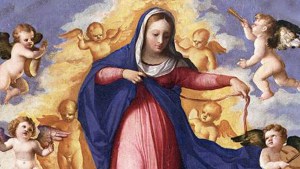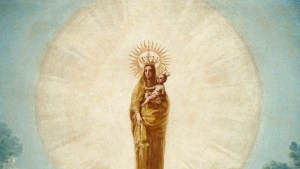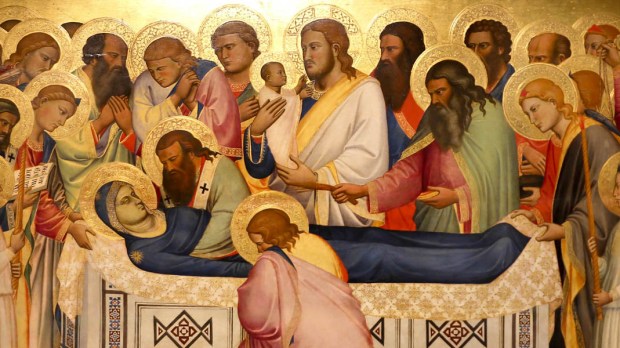In the apostolic constitution Munificentissimus Deus, dated November 1, 1950, Pope Pius XII solemnly defined the dogma of the Assumption of the Blessed Virgin Mary. Having consulted with the bishops of the world, Pope Pius defined as a truth of Catholic belief that “that the Immaculate Mother of God, the ever Virgin Mary, having completed the course of her earthly life, was assumed body and soul into heavenly glory.”
As many commentators have noted, this phrase seems to leave a question open: Did the Blessed Virgin die before she was assumed into heaven? Saying that she “completed the course of her earthly life” doesn’t quite say one way or another.
The question arises because, as the thinking goes, since death is a consequence of sin (“the wages of sin is death,” Romans 6:23), and Mary was free from all sin, original and personal, then isn’t it possible she wouldn’t have to die? Or is it merely by the fact that she is a human being that she would be required to pass through death at the end of life?
And the question matters a great deal! If Mary did not die, then it would be one more great gift from God that she received; at the same time, though, it might make her seem more distant from us. And Jesus chose to die, so wouldn’t it be fitting that his mother share that same fate?
The Church has not taken an official stance on the question, including in Munificentissimus Deus, and the opinion of saints and theologians has been divided. On the one hand, St. Augustine, St. Jerome, and others speak of Mary’s death as something to be assumed (no pun intended) by the faithful. On the other hand, St. Epiphanius and others said it remains unknown whether Mary died, at least leaving open the possibility that she did not.
However, when we look at the whole of the tradition, the scales tip toward the opinion that Mary did indeed die before she was assumed into heaven. In his Fundamentals of Catholic Dogma, Dr. Ludwig Ott calls this the “common opinion” of the tradition. And we can see hints and clues of it in Pope Pius XII’s definition of the dogma.
Pope Pius writes that the early Christians believed “that the great Mother of God … had actually passed from this life. But this in no way prevented them from believing and from professing openly that her sacred body had never been subject to the corruption of the tomb, and that the august tabernacle of the Divine Word had never been reduced to dust and ashes.”

Read more:
Doubting Thomas and the girdle of the Virgin Mary … and us
He also refers to the Sacramentary of Pope Adrian I (c. 786), which refers to the “temporal death” of Mary and notes that the ancient view was that “not only that the dead body of the Blessed Virgin Mary remained incorrupt, but that she gained a triumph out of death.”
Pope Pius quotes St. John Damascene, the 8th-century Father and Doctor of the Church, as speaking about the state of her body “after death,” and references an earliest scholastic thinker, Amadeus of Lausanne, who “held that the Virgin Mary’s flesh had remained incorrupt — for it is wrong to believe that her body has seen corruption — because it was really united again to her soul,” thus suggesting that she did indeed die but was raised from the dead.
Also mentioned is St. Alphonsus Liguori, who wrote that “Jesus did not wish to have the body of Mary corrupted after death, since it would have redounded to his own dishonor to have her virginal flesh, from which he himself had assumed flesh, reduced to dust.”
So, the weight of opinion leans toward the Blessed Virgin Mary having died before being raised again to life and assumed body and soul into heaven. But there’s a deeper significance to this beyond a historical factoid, and it’s found in a key phrase that comes from Pope Pius himself.
He refers to Mary “like her own Son, having overcome death.” Jesus lays down his life and takes it up again, being raised by the Father, conquering sin and death and becoming the “first fruits” (1 Corinthians 15:23) of the resurrection that all humanity will share in Him before the Last Judgment. Mary is the first and greatest disciple of Jesus. She follows him in all things. And so Mary fittingly follows her son into death so that she can be given the gift of being raised up again, as a sign for the rest of us of what we are to receive.

Read more:
This is the first known apparition of Our Lady after the Assumption

